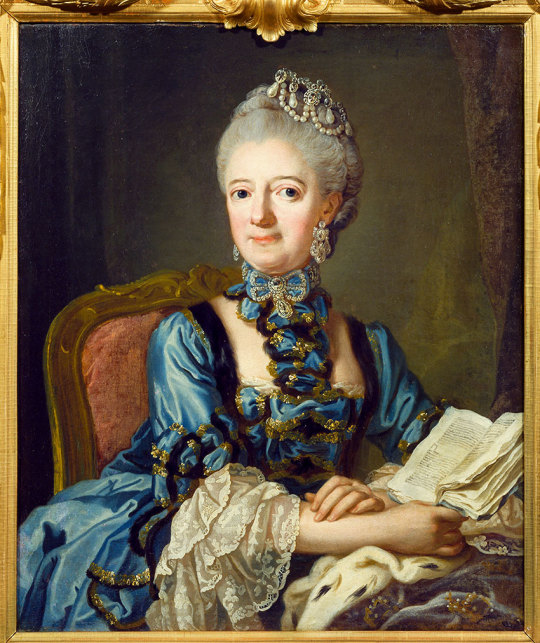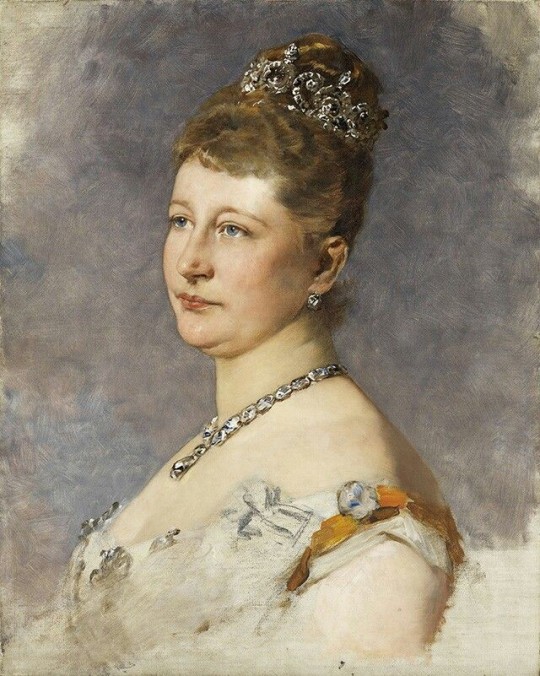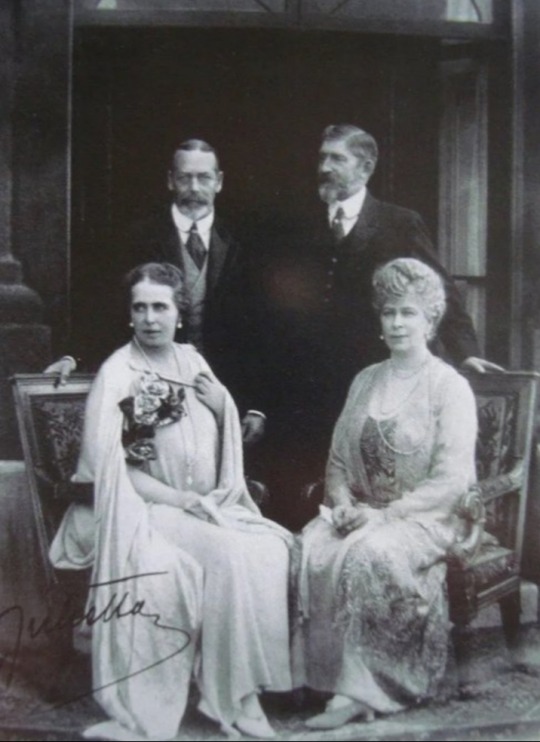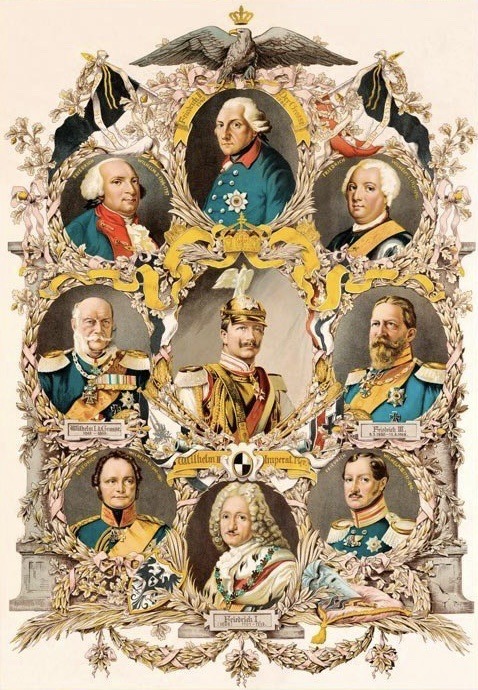#House Hohenzollern
Photo

Princess Philippine Charlotte of Prussia (13 March 1716, in Berlin – 17 February 1801, in Brunswick) was Duchess of Brunswick-Wolfenbüttel by marriage to Duke Charles I. Philippine Charlotte was a known intellectual in contemporary Germany. She is listed as a female composer as she is thought to have written marches and other music.
#Philippine Charlotte of Prussia#House Hohenzollern#XVIII century#XIX century#people#portrait#paintings#art#arte
26 notes
·
View notes
Text
youtube
#Intercon Northfolk#Sirius Star A#Sirius Star#prince lugalbanda#Youtube#Google#the jetsons#house hohenzollern
0 notes
Text

Hohenzollern Castle, Baden-Württemberg, Germany
#art#design#architecture#history#luxury lifestyle#style#luxury house#castle#luxury home#hohenzollern castle#baden württemberg#germany
2K notes
·
View notes
Text

~ Franz Xaver Winterhalter, Portrait of Anna of Prussia (1858) (detail)
via bonniesoubise
#franz xaver winterhalter#anna of prussia#archduchess anna of prussia#house of hohenzollern#prussian royal family#prussian royalty#old royals#german painting#german painter#german art#german artist#painting#fine art#art history#old paintings#painting detail#art detail#portrait painting#portrait#portraiture#19th century#19th century painting#19th century art#victorian#victorian era#victoriana#victorian art#victorian painting#mid 19th century#1850s
604 notes
·
View notes
Text

Crown Prince Frederick William of Prussia, later Emperor Frederick III of Germany (1831-1888). Unknown artist.
#german empire#haus hohenzollern#ii reich#preußen#königreich preußen#house of hohenzollern#prussia#blond guys#royalty#hunky#male beauty#frederick iii#german emperor#friedrich iii
12 notes
·
View notes
Text

Queen Lovisa Ulrika of Sweden by Lorens Pasch the Younger (oil on canvas, 1768)
The talented, highly educated Lovisa Ulrika became one of Sweden's leading cultural figures. No other Swedish queen has left more of a mark on the theatre, and she also breathed new life into royal entertainment. She built up the palace theatres at Drottningholm and Ulriksdal.
Lovisa Ulrika was influenced by the ideals of the French Enlightenment. As a queen, she used the resources at her disposal to promote culture and science. For example, she supported the Swedish writer Hedvig Charlotta Nordenflycht and was also a patron of Carl Linnaeus.
In 1753, Lovisa Ulrika established the Royal Swedish Academy of Letters, a centre of knowledge for research within the humanities.
Photo: royalpalaces.se
#swedish royal family#official portrait#queen lovisa ulrika#luise ulrike von preußen#louisa ulrika of prussia#prinzessin luise ulrike von preußen#princess louisa ulrika of prussia#house of hohenzollern#art history#swedish royalty#swedish history#royal history#my upload
32 notes
·
View notes
Text

Prince Frederick William of Prussia, later Frederick III, Emperor of Germany (1831-1888). By Guglielmo Faija.
#guglielmo faija#frederick iii#german emperor#ii reich#german empire#haus hohenzollern#preußen#house of hohenzollern#prussia
8 notes
·
View notes
Text

Augusta Victoria, German Empress and Queen of Prussia
#empress augusta viktoria of germany#german imperial family#german history#prussian royal family#house of hohenzollern
26 notes
·
View notes
Photo

“Prussian court dresses were also beautiful. This photo from 1865 of Crown Princess Victoria (future German Empress) at King Wilhelm I's coronation.” - Text & Image Submitted by cenacevedo15
52 notes
·
View notes
Text


Queen Marie of Romania, King George V of the United Kingdom, King Ferdinand I of Romania, and Queen Mary of the United Kingdom, 1924
—
Ferdinand (Ferdinand Viktor Albert Meinrad; 24 August 1865 – 20 July 1927), nicknamed Întregitorul ("the Unifier"), was King of Romania from 1914 until his death in 1927.
Marie (born Princess Marie Alexandra Victoria of Edinburgh; 29 October 1875 – 18 July 1938) was the last Queen of Romania as the wife of King Ferdinand I.
George V (George Frederick Ernest Albert; 3 June 1865 – 20 January 1936) was King of the United Kingdom and the British Dominions, and Emperor of India, from 6 May 1910 until his death in 1936.
Mary of Teck (Victoria Mary Augusta Louise Olga Pauline Claudine Agnes; 26 May 1867 – 24 March 1953) was Queen of the United Kingdom and the British Dominions, and Empress of India, from 6 May 1910 until 20 January 1936, as the wife of King-Emperor George V.
#Queen Marie of Romania#King Ferdinand I of Romania#King George V of the United Kingdom#Queen Mary of the United Kingdom#British Royal Family#Romanian Royal Family#House of Hohenzollern-Sigmaringen#House of Saxe-Coburg and Gotha#House of Windsor
28 notes
·
View notes
Text

Erdmuthe of Brandenburg (26 June 1561 – 13 November 1623) was a Princess of Brandenburg and by marriage Duchess of Pomerania.
#Erdmuthe of Brandenburg#House Hohenzollern#xvi century#xvii century#people#portrait#paintings#art#arte
0 notes
Text

Prince George Friedrich and Princess Sophie of Prussia Attend Wedding of Infanta Maria Francisca 7 October 2023 in Mafra, Portugal
#Princess Sophie of Prussia#House of Hohenzollern#royal#wedding guests#wedding#German nobility#monarchy
4 notes
·
View notes
Text

Hohenzollern castle, Baden-Württemberg, Germany,
Konsta Punkka Photography
#art#design#architecture#history#luxury lifestyle#style#luxury house#luxury home#castle#hohenzollern#germany#kpunkka#clouds#gothic#baden württemberg
1K notes
·
View notes
Text

On this 24th of December, of course, there was nothing to indicate that the little person who was soon to see the light of day had an unusual life ahead of her. Nor was it a special service that the three ministers had to perform on Christmas Eve of all days in Duke Maximilian's palace in Ludwigstraße. It was merely a matter of certifying the birth of another member of the House of Wittelsbach, which was part of their official duties. The twenty-nine-year-old head of the house, Duke Maximilian Joseph in Bavaria, became a father for the fourth time in these hours. Two sons and a daughter had already been given to him — although the second of his sons had died in his first year. Now his wife Ludovika was once again in labour. She had actually wanted to spend the hours of the gift-giving with her mother on this Christmas Eve, but her doctor had forbidden it. He suspected that the labour pains would begin on that very evening — and he was right.
The ministers had been waiting for over an hour when Ludovika — or Louise, as the twenty-nine-year-old was also called in the family circle - went through the final stage of her fourth delivery. The birth took place in Ludovika's “white boudoir”. For her emotional support, she was assisted by four women who were also her closest confidants: her mother, the widowed Queen Caroline of Bavaria; her former governess, the now Obersthofmeisterin Countess Auguste of Rottenhan; her half-sister Duchess Auguste of Leuchtenberg, twenty years her senior, who resided in the nearby Palais Leuchtenberg, and her daughter Eugenie, wife of the Hereditary Prince of Hohenzollern-Hechingen. Ludovika's two ladies-in-waiting kept themselves ready in the adjoining rooms. Their task was to be at the service of their mistress's high relatives as soon as they left the boudoir of the woman in childbirth.
Ludovika's appartment directly adjoined the ceremonial rooms of the ducal palace, which also included the reception salon with its mythological frescoes. The ministers waiting here assumed that the birth would not take much longer; otherwise they would not have been brought to the palace — especially on Christmas Eve. In cases like this, they were never notified after the first onset of labour.
Exactly one hour and thirteen minutes after the ministers arrived at the Palais, their wait came to an end: the second daughter of Duke Maximilian and Duchess Ludovika saw the light of day. Now the ministers were called to the boudoir of the duchess, where the midwife presented the newborn to them. The fact that Duchess Ludovika was resting on the chaise longue in her nightdress and dressing gown after the strains of childbirth and that neither her clothes nor her hair were in a condition to receive foreign visitors, indeed that a woman of royal blood never received or had to receive gentlemen in her boudoir anyway — all this was overlooked. After all, the court regulations had to be complied with. And these demanded that a newborn child be presented to the responsible high state officials immediately after birth. This was to ensure that a child whose name was entered on the birth certificate as a legitimate member of the House of Wittelsbach actually had the mistress of the house as its mother. Incidentally, this was also the reason why the ministers had to wait near the woman giving birth. The child's ducal origin and its rightful affiliation to the Wittelsbach dynasty were to be guaranteed beyond doubt. At least the duchess was spared the presence of official witnesses during the delivery. Unlike at the British royal court, Ludovika did not have to go through the intimate act of birth in front of the ministers, protected only by a kind of mobile screen that covered the lower half of the woman's body but exposed her upper body to the gaze of family strangers.
The official act of witnessing was done quickly. After seeing the baby and offering the obligatory congratulations, Sebastian Freiherr von Schrenk, Ludwig Ritter von Wiesinger and Freiherr von Gise left the boudoir. They noted in the birth protocol that another princess had been born to the House of Wittelsbach at exactly ten o'clock and forty-three minutes on the evening of 24 December 1837. They had thus fulfilled their duty and could hurry home to their families.
The newborn girl was given the name Elisabeth Amalie Eugenie. The godmother was an older sister of Ludovika — Elisabeth Ludovika of Prussia, who would become Queen of Prussia three years after the birth of her godchild. The little princess was given her second name, Amalie, in honour of her godmother's twin sister, later Queen of Saxony. Finally, the third name Eugenie referred to the cousin who had assisted Ludovika in her labour. Two days after her birth, Elisabeth was baptised in the collegiate church of St. Kajetan, the court church in Munich called “Theatinerkirche”.
Winkelhofer, Martina (2021). Sisis Weg: Vom Mädchen zur Frau – Kaiserin Elisabeths erste Jahre am Wiener Hof (Translation done by DeepL. Please keep in mind that in a machine translation a lot of nuance may/will be lost)
ON THIS DAY, IN 1837, DUCHESS ELISABETH AMALIE EUGENIE IN BAVARIA WAS BORN. She was the fourth child and second daughter of Duke Maximilian in Bavaria and his wife, Princess Ludovika of Bavaria. At 16 years-old she married her cousin Emperor Franz Josef I of Austria and became the second to last Empress of Austria and Queen of Hungary.
#happy birthday girl you'll always be famous<3#empress elisabeth of austria#ludovika of bavaria duchess in bavaria#queen caroline of bavaria#auguste of bavaria duchess of leuchtenberg#eugenie of leuchtenberg princess of hohenzollern-hechingen#on this day in history#maximilian joseph duke in bavaria#house of wittelsbach#historicwomendaily#Sisis Weg: Vom Mädchen zur Frau – Kaiserin Elisabeths erste Jahre am Wiener Hof#historian: martina winkelhofer
73 notes
·
View notes
Text



Frederick III, Emperor of Germany and King of Prussia. By Alexander Bassano.
#alexander bassano#frederick iii#german emperor#ii reich#haus hohenzollern#königreich preußen#kingdom of prussia#house of hohenzollern#bearded men#preußen#royalty
5 notes
·
View notes
Text



Today I witnessed and participated in an amiable small-talk that can easily be considered “stuff of legends”. 😂
Me, looking through a lovely pre-revolutionary book about Napoleonic era, which was provided to me for a brief introduction, and reading out loud some lines occasionally: "It is said that when the French heard about the Frankfurt proposals, they complained and laughed interchangeably at the thought that the fate of modern Europe would be in the hands of some Habsburgs or Hohenzollerns, who were the embodiment of German feudalism."
*light chuckles intensifying*
*then more coherent conversation takes place*
— So, is it better to have French imperialism instead of German feudalism?)))
— Yes. Keep flipping through. 🗿
*chuckles instantly turn into homeric laughter*
❗️Friendly reminder: it was a simple joke, historical process is a much more complicated business as well as specific terms used in that purely comedic case. ✌️
#count’s private life#history meme#napoleon i#house of habsburg#house of hohenzollern#napoleonic era#napoleonic wars#19th century
9 notes
·
View notes